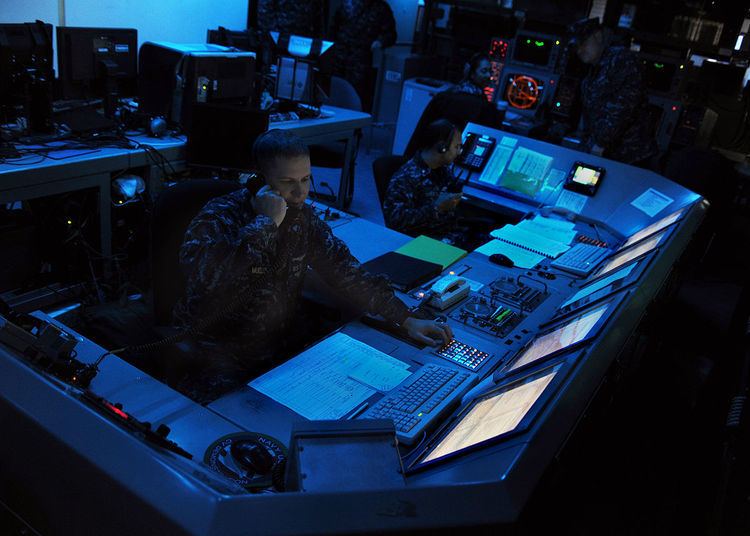 | ||
Military operations other than war (MOOTW) focus on deterring war, resolving conflict, promoting peace, and supporting civil authorities in response to domestic crises. The phrase and acronym were coined by the United States military during the 1990s, but it has since fallen out of use. The UK military has crafted an equivalent or alternate term, peace support operations (PSO). Both MOOTW and PSO encompass peacekeeping, peacemaking, peace enforcement and peace building.
Contents
- Overview
- Australia
- Select Australian deployments
- Canada
- Select Canadian deployments
- China
- Select Chinese deployments
- Japan
- Select Japanese deployments
- United Kingdom
- Selected British deployments
- United States
- Select American deployments
- Singapore
- Select Singapore deployments
- References
MOOTW not involving the use or threat of force include humanitarian assistance and disaster relief. Special agreements exist which facilitate fire support operations within NATO and the ABCA quadripartite working group, which includes American, British, Canadian and Australian military contingents. Cooperation is organized in advance with NATO standardisation agreements (STANAGs) and quadripartite standardisation agreements (QSTAGs). Many countries which need disaster support relief have no bilateral agreements already in place; and action may be required, based on the situation, to establish such agreements.
MOOTW also involves arms control and peacekeeping.
The United Nations (UN) recognises the vulnerability of civilians in armed conflict. Security Council resolution 1674 (2006) on the protection of civilians in armed conflict enhances international focused attention on the protection of civilians in UN and other peace operations. The implementation of paragraph 16 anticipates that peacekeeping missions are provided with clear guidelines regarding what missions can and should do to achieve protection goals; that the protection of civilians is given priority in decisions about the use of resources; and that protection mandates are implemented.
Overview
MOOTW purposes may include deterring potential aggressors, protecting national interests and support the United Nations (UN) objectives.
Peacetime and conflict represent two states of the range of military operations.
Planners are challenged to find ways to resolve or work around unique arrays of inter-related constraints, e.g., issues related to budgeting, training and force structure. The uncertainties which are inherent or implied include the varying political aspects which are likely to affect unanticipated MOOTW.
Australia
The Australian Defence Forces has turned attention to the study and understanding of a changing geo-strategic environment. MOOTW becomes more important where the options for traditional application of military instruments are growing more limited.
Australian participation in UN peacekeeping operations began in 1947.
Select Australian deployments
Current Australian deployments include the UN Assistance Mission in Afghanistan (UNAMA); the UN Assistance Mission for Iraq (UNAMI); the UN Peacekeeping Force in Cyprus (UNFICYP); the UN Truce Supervision Organisation (UNTSO); the UN Integrated Mission in Timor-Leste (UNMIT); the UN Mission in the Sudan (UNMIS); and the UN–African Union Mission in Darfur (UNAMID).
Canada
The curriculum of Canada's military training programs includes MOOTW. Canadian peacekeeping is well publicised in Canada.
Select Canadian deployments
China
The non-traditional missions of the Chinese armed forces have evolved as an increasingly used tool of statecraft.
The People's Liberation Army (PLA) established specialized forces for military operations other than war. Current planning anticipates five specialized groups, including (a) flood and disaster relief forces, (b) post-earthquake emergency rescue forces, (c) emergency rescue forces for nuclear, chemical and biological disasters, (d) emergency relief force for transportation facilities and (e) international peacekeeping force.
MOOTW have been a subject of study at the National Defence University (NDU), which became a venue for examining the practical experience of equipment utilisation and support. The characteristics, rules, contents and methods of equipment utilisation and support in MOOTW were evaluated.
Select Chinese deployments
Japan
The military in Japan is affected by Japan's pacifist post-war constitution. This affects classification of the Hyūga class helicopter carriers, which are ships of the Japan Maritime Self-Defense Force (JMSDF). The missions of these ships are limited to "military operations other than war."
Select Japanese deployments
United Kingdom
The prescience of Sir Julian Corbett (1854–1922) and his strategic point of view are reflected in contemporary applications of MOOTW, which extend and reinvigorate Corbettian formulations.
The evolution of British tactics in the Malayan Emergency (1948–1960) illustrates lessons learned the hard way. The British developed a strategy with elements similar to "military operations other than warfare." Lieutenant General Sir Harold Briggs proposed "two key goals to accomplish in order to end the insurgency--first, to protect the population, and second to isolate them from the guerrillas."
British peacekeeping troops in Bosnia in the late 1990s attended to similar objectives in a process of re-establishing "normalcy."
Selected British deployments
United States
In United States military doctrine, military operations other than war include the use of military capabilities across a range of operations that fall short of war. Because of political considerations, MOOTW operations normally have more restrictive rules of engagement (ROE) than in war.
Although the MOOTW acronym is new, the concepts are not. The RAND database identifies 846 military operations other than war between 1916 and 1996 in which the US Air Force or its predecessors played a noteworthy role.
Select American deployments
Singapore
The Singapore Armed Forces (SAF) anticipates a continuing need for conventional military competence into the foreseeable future, but missions in which the use of minimal force is the rule rather than the exception are expected to grow in importance. Proficiency in MOOTW requires a much greater and somewhat different set of skill sets than traditional war-fighting. In this context, the SAF is developing new training programmes for small unit leaders. The process of educating and preparing a professional SAF capable of handling a wide spectrum of operations anticipates an increase in MOOTW. These men will need to ready to become "peacekeepers, goodwill ambassadors and winners of hearts and minds."
In 1999, the Singapore contingent of UN peacekeepers in East Timor was the most extensive MOOTW mission attempted by the SAF. The commitment included three landing ship tanks (LSTs), medical teams, C-130s, military observers and logistics support.
